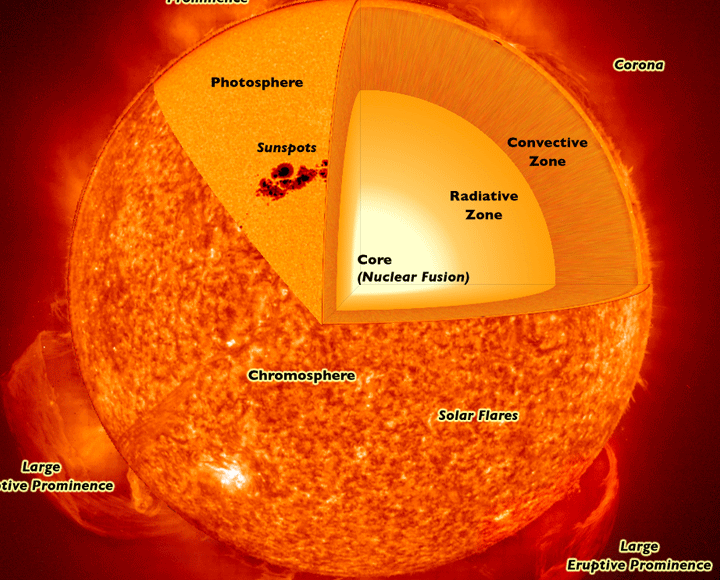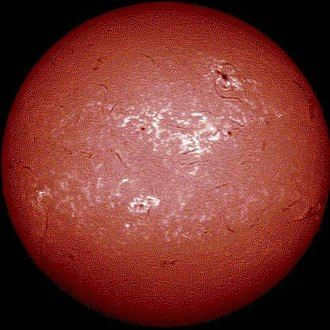
This is a high-quality picture of the solar chromosphere that was captured using the Swedish Solar Telescope.
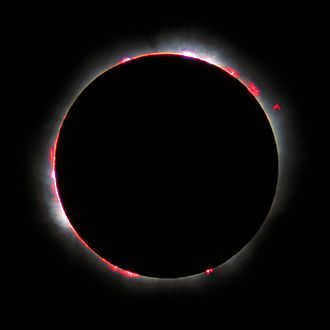
The chromosphere (known as the “sphere of color”) represents the second layer among the three primary layers in the Sun’s atmospheres and has a depth ranging from 3000 to 5000 kilometers. Its distinct pink-red hue can only be observed during eclipses. Positioned just above the photosphere and below the transition region of the Sun, the chromosphere’s upper section is characterized by a uniform composition. From this uniform layer, numerous spicules resembling hair-like structures emerge, with some extending as far as 10,000 km into the corona region above.
The density of the chromosphere is typically 10 to 4 times greater than that of the photosphere, which is the layer directly below it, and 10 to 8 times greater than the Earth’s atmosphere at sea level. As a result, the chromosphere is generally not visible to the naked eye and can only be observed during a total solar eclipse, when its distinct reddish hue becomes apparent. The chromosphere exhibits a range of colors, spanning from pink to red. Without the aid of specialized equipment, the chromosphere remains hidden due to the overwhelming brightness of the photosphere situated beneath it.
Chromospheres have been observed in stars other than our own Sun. Although studying and understanding the Sun’s chromosphere has proven challenging, scientists continue to make observations using the electromagnetic spectrum.
Comparing the chromosphere and photosphere
While the photosphere exhibits an absorption line spectrum, the chromosphere’s spectrum is dominated by emission lines. One of the most prominent lines is the H α line, which has a wavelength of 656.3 nm. This line is emitted by hydrogen atoms when their electrons transition from an energy level of n = 3 to n = 2. The 656.3 nm wavelength falls within the red part of the spectrum, giving the chromosphere its distinct reddish color.
Through the analysis of the chromosphere’s spectrum, it has been discovered that the temperature of this particular layer in the solar atmosphere rises as it extends higher within the chromosphere. At the uppermost region of the photosphere, the temperature is merely around 4400 K, whereas at the uppermost part of the chromosphere, which is approximately 2000 km above, it reaches a scorching 25000 K. However, in contrast to this, the photosphere experiences a decrease in temperature as altitude increases. The cause of this paradoxical increase in temperature in the chromosphere, further away from the Sun’s interior, is not yet fully understood. Nevertheless, it is likely that magnetic reconnection plays a significant role in this phenomenon.
Phenomena in the Chromosphere
The chromosphere exhibits various phenomena:
- One of the most common indications is the occurrence of spicules. Spicules rise to the top of the chromosphere and then descend within approximately 10 minutes. Additionally, there are horizontal gas jets known as fibrils, which have a longer duration compared to spicules.
- Fibrils (and prominences, which appear as fibers when viewed from the side) are responsible for many coronal mass ejections and are therefore crucial for predicting space weather.
- Imagery captured of typical chromospheric lines reveals the presence of bright cells, often referred to as nets, while the surrounding dark areas are known as interstitials. These structures resemble the granules commonly observed on the photosphere as a result of thermal convection.
- Periodic oscillations have been identified ever since the initial observations using the SUMER instrument on board SOHO. These oscillations have frequencies ranging from 3 to 10 mHz, which corresponds to a characteristic periodic time of three minutes. Fluctuations in the radial component of the plasma velocity are a distinctive feature of the high chromosphere. It is now understood that the photospheric granulation structure generally does not exhibit any oscillations above 20 mHz. However, higher frequency waves (100 mHz or a period of 10 seconds) have been detected in the solar atmosphere, particularly at temperatures typical of the transition region and corona, using TRACE.
- At the boundary of the solar disk, one can observe cold loops, which are distinct from prominences in that they manifest as concentric arcs with maximum temperatures of about 0.1 MK (insufficient to be classified as coronal features). These cold loops exhibit significant variability, appearing and vanishing in certain UV lines within an hour or expanding rapidly in 10-20 minutes. In 1976, Foukal extensively examined these cold loops using observations obtained from the EUV spectrometer on Skylab. When the plasma temperature of these loops reaches coronal levels (above 1 MK), they appear to be more stable and develop over longer time periods.
A spectroscopic indicator of the chromospheric activity of other stars is the S-index Mount Wilson .
Further reading
References
External links
Photosphere – This is the visible surface of a star, emitting most of the optical radiation. This layer has a thickness of 100 to 400 km and temperatures ranging from 6600°C (interior) to 4400°C (near the outer edge). The photosphere is responsible for determining the size of the Sun. The gas in this region is relatively sparse, and its rotational speed varies from one area to another. In the equatorial region, it completes one revolution in 24 days, while in the polar region it takes 30 days.
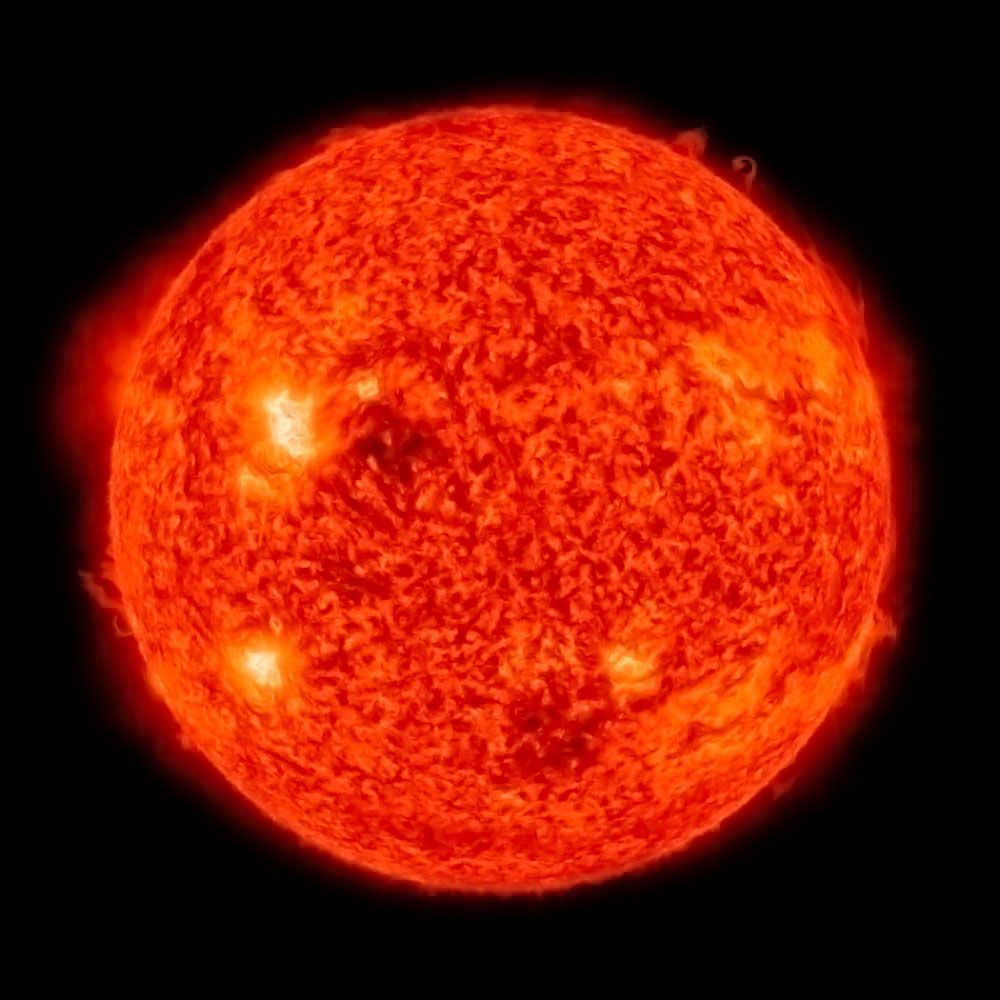
What is Chromosphere?
The chromosphere is a layer that encircles the photosphere and has an approximate width of 2000 km. It is distinguished by its upper limit, which emits hot gases known as spicules. This region of the Sun is observable solely during a complete solar eclipse and manifests as a reddish hue.
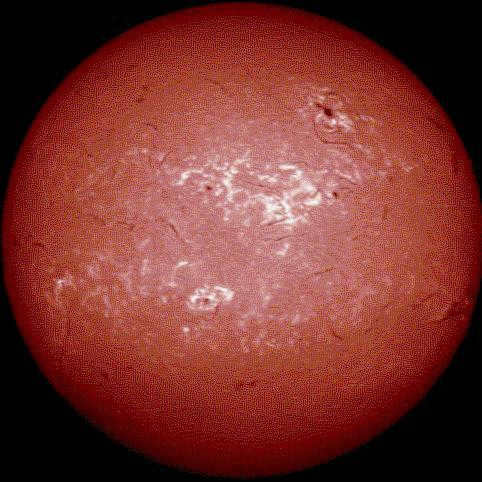
The solar corona
The solar corona is the outermost layer of the Sun’s atmosphere. It is known for its prominences and energy eruptions, which can extend over vast distances of hundreds of thousands of kilometers. These eruptions contribute to the formation of the solar wind.
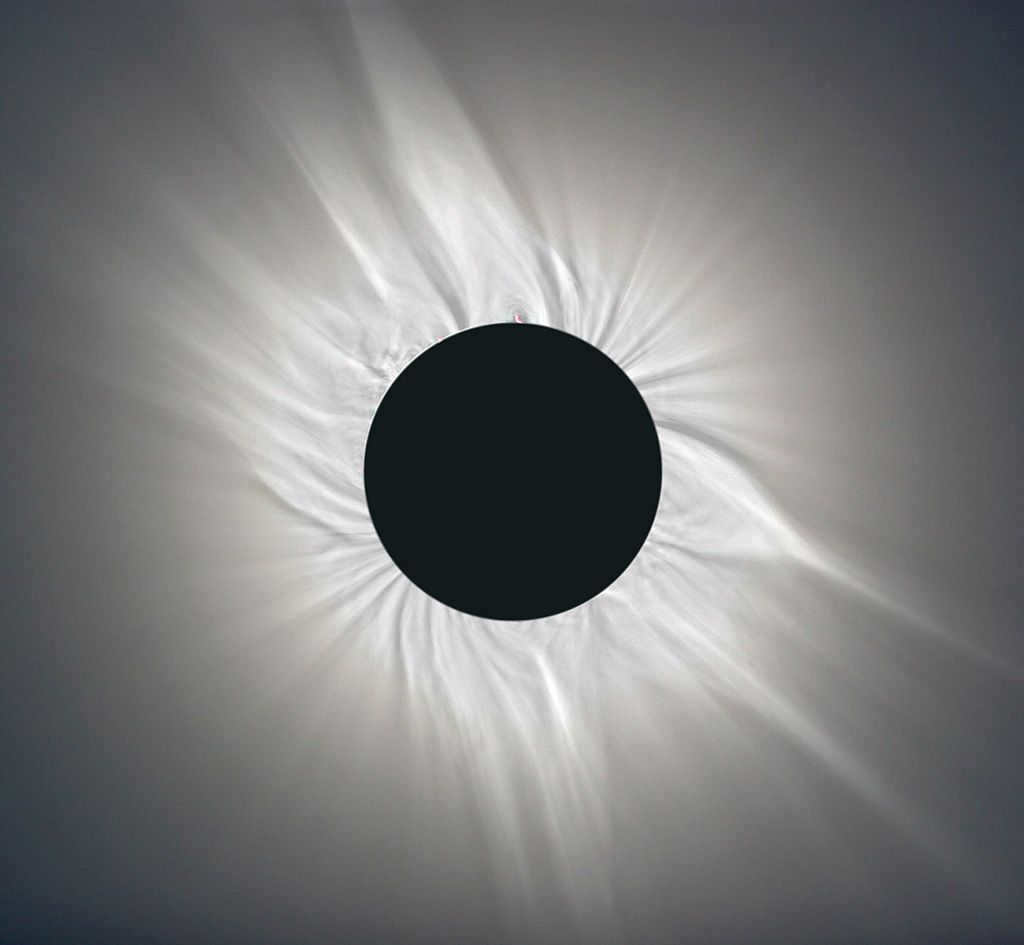
The corona of the Sun is significantly hotter than its surface, with temperatures ranging from 1,000,000° K to 2,000,000° K, and even reaching extremes of 8,000,000° K to 29,000,000° K in certain areas. However, the corona can only be observed during a solar eclipse. Additionally, the shape of the corona undergoes changes, which are influenced by the solar cycle. During periods of maximum solar activity, the corona appears rounded in shape, while during periods of minimum activity, it becomes elongated along the equator.
Solar wind
The solar wind is a flow of charged particles discharged from the Sun in every direction with a velocity of approximately 400 kilometers per second. The origin of the solar wind is the sun’s corona. The temperature of the sun’s corona is so extreme that its gravitational force is insufficient to keep its material near the surface, resulting in a continuous release of matter into the space between planets.
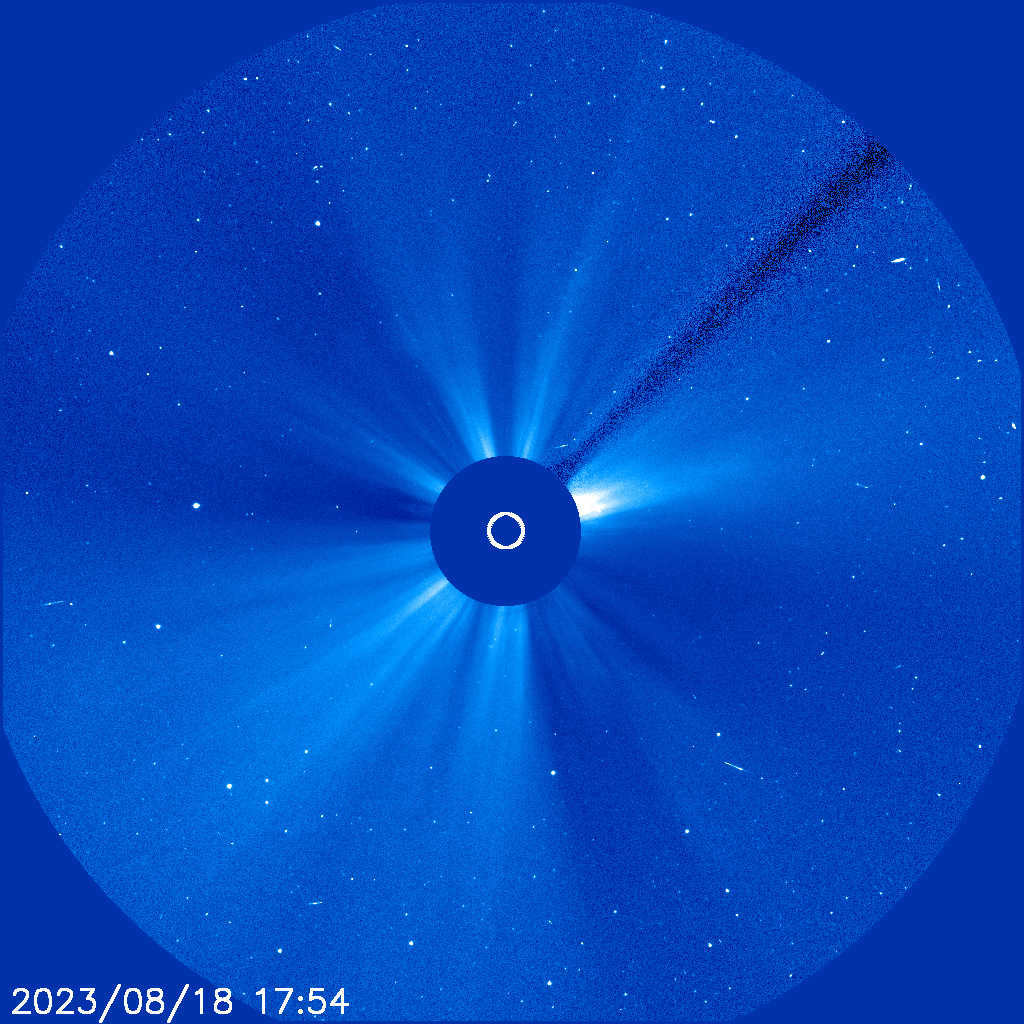
Although we have an understanding of the general causes of the solar wind, many of the specifics of this process remain unclear. Specifically, the exact location where the gas in the corona is accelerated to such high speeds is currently not fully known.
The Sun is an enormous sphere comprised of glowing gases that emit immense energy and light, enabling life on Earth to exist.
This celestial entity is the largest and most massive in the entirety of the solar system. The distance from our planet to the Sun is approximately 150 million kilometers. It takes approximately eight minutes for the heat and sunlight from the Sun to reach us. This distance is often referred to as eight light minutes.
The celestial body that provides heat and light to our planet consists of multiple external layers including the photosphere, chromosphere, and solar corona. These outer layers of the Sun’s atmosphere generate energy at the surface, which then rises and emanates from the star’s inner regions, ultimately manifesting as the radiant rays of sunlight.
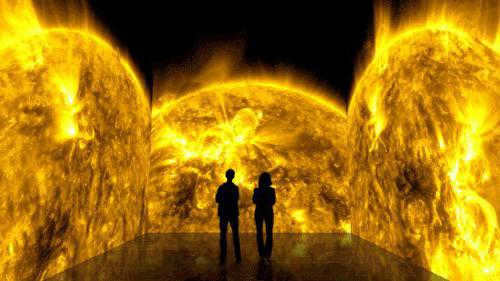
The elements of the Sun’s outer layer
The outer layer that is visible to us is known as the photosphere or the sphere of light. The photosphere is characterized by luminous, bubbling plasma pellets and darker, cooler sunspots that form when the Sun’s magnetic fields break through the surface. These sunspots appear and move across the surface of the Sun. By studying this movement, astronomers have determined that our star rotates on its axis. As the Sun lacks a solid surface, different regions rotate at varying speeds. Equatorial areas complete a full rotation in approximately 24 days, while polar regions can take over 30 days to complete a revolution.
What is the photosphere?
The photosphere, known as the outermost layer of the Sun’s surface, is responsible for emitting solar flares, which are fiery protrusions that stretch across vast distances above the Sun. These solar flares release a variety of energy forms, such as X-rays, ultraviolet rays, electromagnetic radiation, and radio waves. It is important to note that the solar corona is the direct source of X-ray and radio emissions.
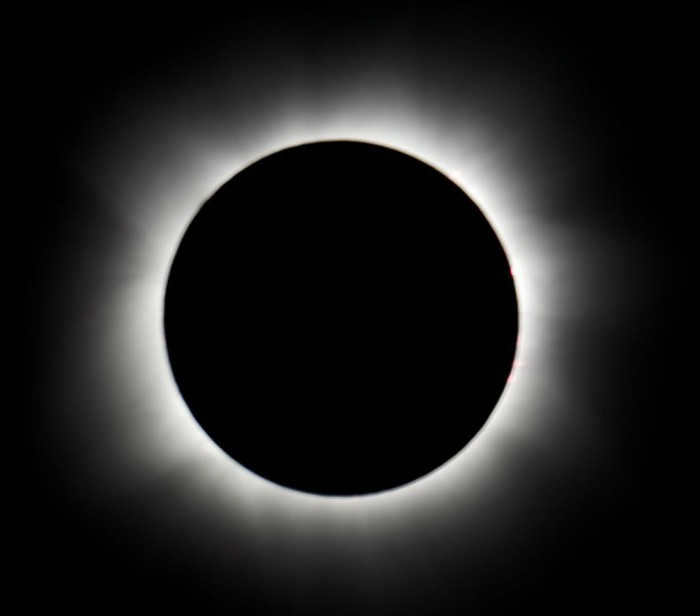
What is the chromosphere?
The chromosphere is the region that surrounds the photosphere, which is the outer layer of the Sun. It is separated from the corona by a narrow region. The temperature increases significantly in the transition region, going from a few thousand degrees in the chromosphere to over a million degrees in the corona. The chromosphere gives off a reddish glow, similar to the light emitted by superheated hydrogen. However, this red glow can only be observed during an eclipse. In normal circumstances, the light from the chromosphere is usually too faint to be seen against the bright photosphere. The plasma density decreases rapidly as it moves upward from the chromosphere to the corona through the transition region.
What is the solar corona? Description
The solar corona is a subject of ongoing research for astronomers who are constantly seeking to unravel its mysteries. What exactly is the solar corona and what role does it play?
The outer layer of the Sun, known as the corona, gets its name from its visible appearance during a total solar eclipse. Particles from the corona extend into space and even reach the Earth’s orbit. The shape of the corona is largely influenced by the magnetic field. Numerous structures are formed by free electrons in the corona moving along magnetic field lines. The corona above sunspots often exhibits horseshoe-shaped outlines, which further indicates their alignment with magnetic field lines. These “arches” can stretch out from the top and extend to distances equal to or greater than the diameter of the Sun, suggesting that some process is pulling material away from the arches and into space. This phenomenon is related to the solar wind, which flows outward through our solar system. Astronomers have dubbed these phenomena “serpentine helmets” due to their resemblance to the serrated helmets worn by knights and used by certain German soldiers prior to 1918.
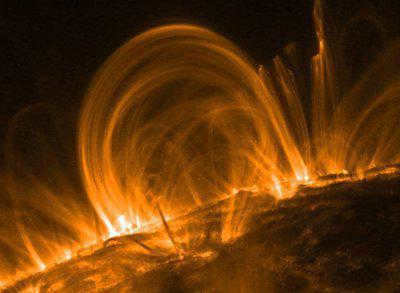
What is the composition of the corona?
The solar corona is composed of an extremely hot and rarefied plasma. It has a temperature exceeding one million degrees, which is surprisingly much higher than the surface temperature of the Sun, which is approximately 5500°C. The pressure and density of the corona are significantly lower compared to the Earth’s atmosphere.
Brightness and fascinating information
The surface of the Sun is exceedingly bright, and its solar atmosphere is typically unattainable to our eyes. Likewise, the Sun’s corona is not visible to the naked eye. The outer layer of the atmosphere is extremely thin and faint, making it only visible from Earth during a solar eclipse or with the aid of a specialized coronograph telescope, which mimics an eclipse by blocking out the bright solar disk. Certain coronographs utilize telescopes located on the ground, while others are carried out on satellites.
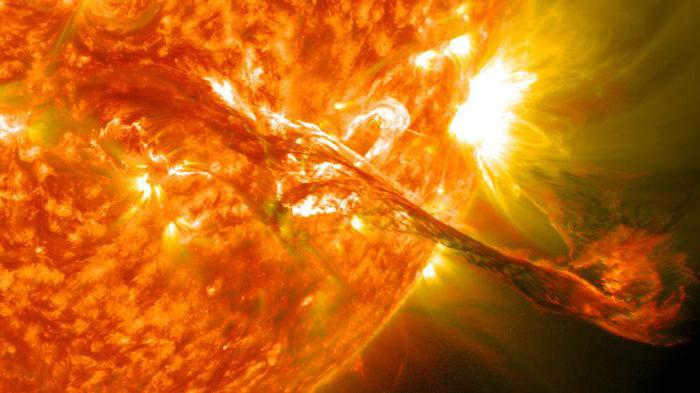
The high temperature of the solar corona is responsible for its brightness in X-rays. Conversely, the solar photosphere emits only a small amount of X-rays. This enables us to observe the corona throughout the Sun’s surface in X-rays. Special optics are utilized to detect the X-rays. In the early 1970s, the pioneering US space station, Skylab, employed an X-ray telescope to successfully observe the solar corona and sunspots or coronal holes for the first time. Over the past decade, a wealth of information and imagery concerning the Sun’s corona has become accessible. Satellites have played a crucial role in facilitating new and intriguing observations of the Sun, its characteristics, and its dynamic behavior.
Temperature of the Sun
Despite the fact that the direct observation of the solar core’s internal structure is impossible, various models suggest that the maximum temperature within our star is around 16 million degrees Celsius. While the visible surface of the Sun, known as the photosphere, has a temperature of approximately 6000 degrees Celsius, the temperature rises dramatically to several million degrees in the corona, which is located around 500 kilometers above the photosphere.
Contrary to expectations, the Sun’s inner regions are hotter than its outer layers. However, the Sun’s outer atmosphere, known as the corona, is indeed hotter than the photosphere.
During the late 1930s, Grotrian (1939) and Edlen made a significant discovery regarding the spectral lines found in the solar corona’s spectrum. They determined that these lines were being emitted by highly ionized elements such as iron (Fe), calcium (Ca), and nickel (Ni). This led them to the conclusion that the coronal gas is heated to extremely high temperatures, surpassing 1 million degrees Celsius.
The reason behind the extreme heat of the solar corona has remained a captivating enigma in the field of astronomy for the past 60 years. Despite extensive research, there is still no definitive answer to this compelling question.
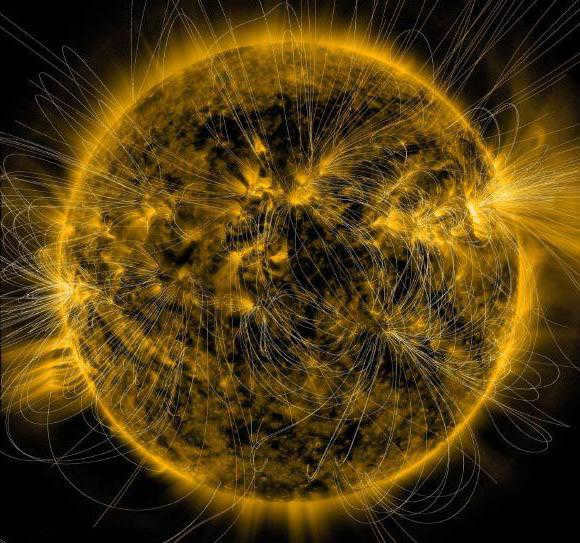
Despite the fact that the solar corona is exceptionally hot, it is also characterized by an extremely low density. As a result, only a small portion of the entire solar radiation is needed to sustain the corona. The overall amount of X-rays emitted is only about one millionth of the Sun’s total brightness. A crucial inquiry is how the energy is conveyed to the corona and which mechanism is accountable for this conveyance.
Mechanisms for generating energy in the solar corona
Throughout the years, various mechanisms have been proposed to explain the generation of energy in the solar corona:
- Acoustic waves.
- Fast and slow magneto-acoustic body waves.
- Alfven body waves.
- Slow and fast magneto-acoustic surface waves.
- Current (or magnetic field)-scattering.
- Particle and magnetic flux flows.
These mechanisms have undergone both theoretical and experimental testing, and as of now, only acoustic waves have been disproven.
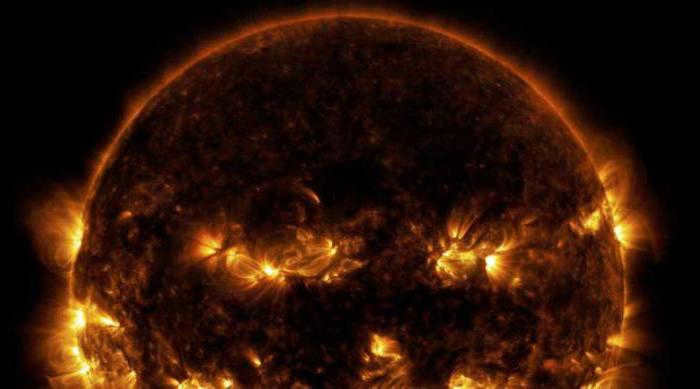
The upper limit of the corona has yet to be investigated. The corona encompasses the Earth and other planets within the solar system. Optical emissions from the corona can be observed up to 10-20 solar radii (equivalent to tens of millions of kilometers) and can be observed alongside the phenomenon known as zodiacal light.
The magnetic carpet of the solar corona
Recently, the enigmatic phenomenon known as the “magnetic carpet” has been posited as a potential solution to the perplexing coronal heating puzzle.
Imaging technology with an unprecedented level of detail has revealed that the Sun’s surface is adorned with delicate magnetic fields that gather in localized regions of opposing polarity, resembling a magnificent celestial carpet. These magnetic concentrations are believed to serve as the primary conduits for individual magnetic tubes, which ferry electric current through the Sun’s atmosphere.
Here is a basic concept of how coronal heating can be influenced by a magnetic carpet. Nevertheless, it cannot be asserted that the “magnetic carpet” definitively resolves the issue of coronal heating, as there has not yet been a quantitative model presented for the process.

Is it possible for the Sun to extinguish?
The solar system is incredibly intricate and unexplored, making sensational claims like “The Sun will go out soon” or, conversely, “The Sun’s temperature is rising and life on Earth will soon become impossible” seem absurd. It is impossible for anyone to make such predictions without a precise understanding of the mechanisms that drive this enigmatic star!

This is a high-quality photograph taken by the Swedish Solar Telescope, capturing the intricate details of the solar chromosphere.

The chromosphere, also known as the "sphere of color," is the second layer of the Sun's atmosphere and has a depth of approximately 3,000 to 5,000 kilometers. Its vibrant pink-red hue is only visible during eclipses. Positioned above the photosphere and below the solar transition region, the chromosphere exhibits a uniform composition. Within this layer, numerous spicules resembling hair-like structures emerge, with some reaching heights of up to 10,000 kilometers into the corona.
The density of the chromosphere decreases as it moves away from the Sun’s center. It follows an exponential decrease from 10^17 particles per cubic centimeter, or approximately 2 × 10^-4 kg/m^3, to less than 1.6 × 10^-11 kg/m^3 at the outer boundary. [2] The temperature also decreases from the inner boundary by approximately 6000 K. [3] At the minimum, it reaches 3800 K [4] before increasing to 35000 K [3] at the outer boundary, where it transitions to the corona.
Chromospheres have been observed in stars other than the Sun. [5] The Sun’s chromosphere is challenging to study and understand, although ongoing observations utilize the electromagnetic spectrum. [6]
Comparing the Chromosphere and Photosphere
The photosphere and chromosphere differ in terms of their spectral characteristics. While the photosphere exhibits an absorption line spectrum, the chromosphere is characterized by a dominance of emission lines. One of the most prominent emission lines in the chromosphere is the CHASα line, which has a wavelength of 656.3 nm. This line is emitted by hydrogen atoms when their electrons transition from the n= 3 to n=2 energy levels. Due to its location in the red part of the spectrum, the chromosphere takes on a distinct reddish hue.
When examining the spectrum of the chromosphere, researchers have discovered that the temperature of this layer of the sun’s atmosphere rises as it gets higher within the chromosphere. At the highest point of the photosphere, the temperature is approximately 4400 K, but it reaches 25000 K around 2000 km above in the chromosphere. [1] [7] Interestingly, this is the opposite of what occurs in the photosphere, where the temperature decreases with altitude. The exact cause of this paradoxical temperature increase in the chromosphere, further away from the sun’s interior, is not yet fully understood. However, it is believed that magnetic reconnection plays a significant role in this phenomenon.
Functions
There are numerous fascinating occurrences that can be observed in the chromosphere, which is an incredibly intricate and dynamic region:
- Many coronal mass ejections are associated with filaments (and protrusions, which can be considered as filaments when observed from a different angle), making them crucial for space weather forecasting. These solar protrusions emerge from the photosphere and can reach impressive heights of up to 150,000 km. These massive gas plumes are among the most striking solar phenomena, except for the comparatively rare solar flares.
- Images captured of typical chromospheric lines reveal the presence of brighter cells, commonly referred to as nets, and the surrounding darker areas are known as the merged network. These structures bear a resemblance to the granules that are commonly observed on the photosphere as a result of heat convection.
- Periodic oscillations have been observed since the initial observations made with the SUMER instrument on board the SOHO spacecraft, with frequencies ranging from 3 mHz to 10 mHz, corresponding to a characteristic period of three minutes. [8] Fluctuations in the radial component of the plasma velocity are characteristic of the high chromosphere. It is now understood that the photospheric granulation pattern typically does not exhibit oscillations above 20 mHz, while higher-frequency waves (100 mHz or a period of 10 seconds) have been detected in the solar atmosphere, specifically in regions with temperatures typical of the transition region and corona, as observed using SLED. [9]
- Funky loops are visible at the edge of the solar disk. They are different from prominences in the sense that they appear as concentric arcs with maximum temperatures of around 0.1 MK (which is too low to be considered as coronal features). These cold loops are highly variable: they can appear and disappear in certain UV lines in less than an hour or expand rapidly in 10-20 minutes. Foukal [10] conducted a detailed study of these cold loops based on observations made with the EUV spectrometer at Skylab in 1976. On the other hand, when the plasma temperature of these loops becomes coronal (above 1 MK), these features appear to be more stable and develop over a longer period of time.
Check out the spectrum of the solar chromospheric flare (eclipse of March 7, 1970).

